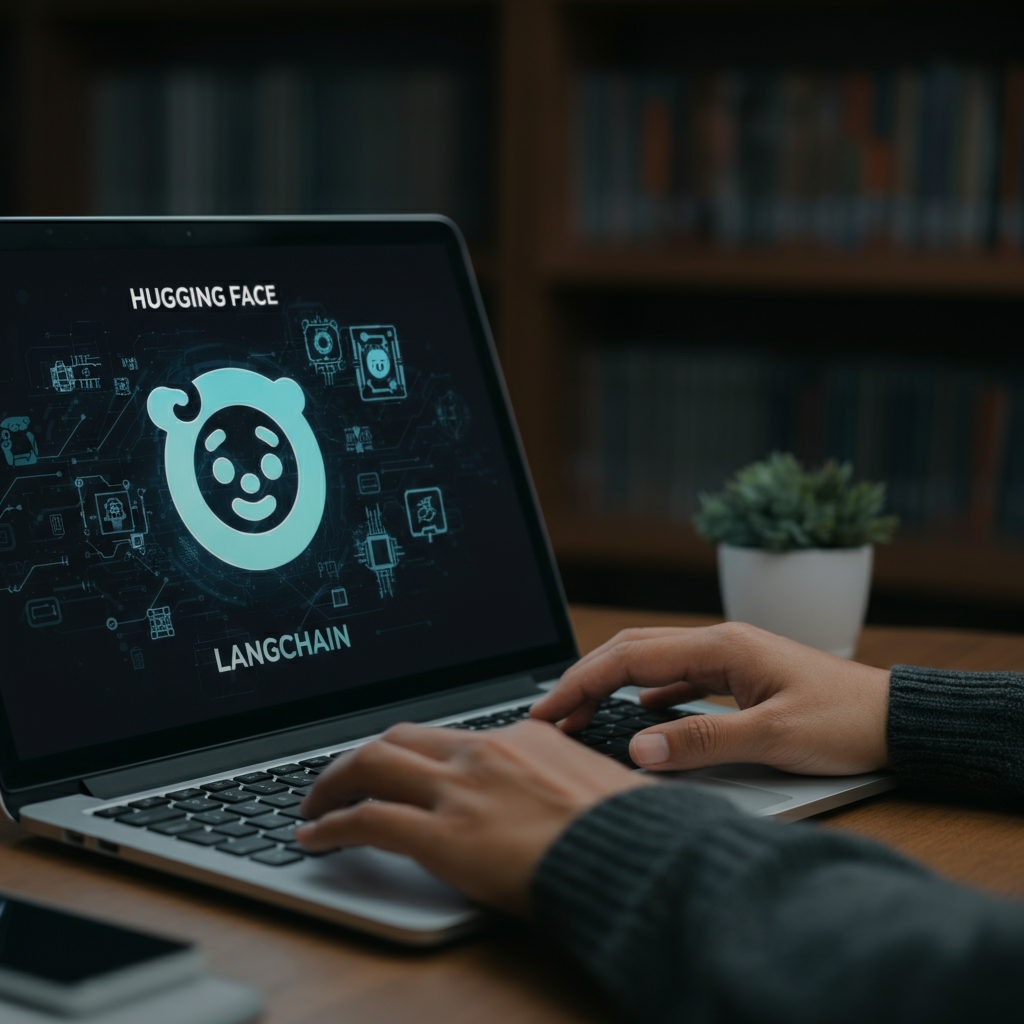Comparison of Generative AI Tools and Libraries for 2025

Introduction
Artificial intelligence (AI) has been advancing quite rapidly and consequently generative AI has become the buzzword nowadays and so are their applications in various industries such as content creation, healthcare, and whatnot. By 2025, it’s essential to compare generative AI tools and libraries since so many platforms have popped up for text generation, image generation and video creation.
In this article, we discuss the best generative AI tools and libraries of 2025, use cases, top features, and how to pick the best platform that meets your needs. As a developer, researcher, or business professional, you may now be able to leverage the power of these tools for transformational effects.
What is Generative AI?

Definition and Importance
Generative AI is a type of artificial intelligence that can create new content from text to images, music and even video. Traditional AI examines a discrete set of inputs to predict outcomes, whereas generative AI deals with creation, often emulating human-like creativity.
Use cases range across industries from content creation to entertainment to healthcare to education. For example, marketers utilize generative AI to create enticing ad campaigns. Healthcare professionals use it to simulate medical records for research purposes.
Core Concepts
Generative AI uses high-quality models and platforms to do its work. Some popular examples are transformer models like GPT (Generative Pre-trained Transformer) and open-source libraries like Hugging Face and LangChain. These tools you train on data and then you use it and it has made generative tasks, which formerly were really hard, like video generation and text generation, so easy that it is something mostly everyone can do.
Why Compare Generative AI Tools and Libraries in 2025?
Technological Advancements
We are still learning about what to make of 2025, which is already a louche year that promises TED-up AI progress in new technologies with unprecedented scale, with the accuracy and efficiency of generative AI programs. Advances have made AI algorithms less biased and better at creating a wide range of content types and complexities.
Choosing the Right Platform
Choosing a generative AI platform, the one that works best for you is critical to achieving results. Developers want software that minimizes friction within their workflows, and businesses want tools that are (in both senses of the word) economically scalable. An informed decision saves precious time and reaps the most benefits from AI-enabled solutions.
Top Generative AI Tools for 2025
Open-Source Libraries
The advanced tools of AI have been made accessible by open-source libraries. Here are some defining examples:
- Hugging Face: Hugging Face has a wide range of pre-trained models available specific to various tasks such as text and language generation.
- LangChain: A library designed for ease of use for developers to integrate LLMs into applications.
- GPT4All: Open-source alternative to proprietary tools; flexibility for customizing and deploying.
They are great in accessibility, cheapness and community backup, hence they are favored among researchers and startups.

Enterprise Platforms
Enterprise starts with a set of platforms designed for your company if you need something powerful or scalable. Notable examples include:
- • Google Vertex AI: Fully managed platform with pre-trained and custom AI models for multiple use cases.)
- • Microsoft Azure OpenAI: Enterprise-grade support for GPT models, including security and compliance capabilities.
- • Amazon Bedrock: Makes it easy to build and scale generative AI applications without having to be an infrastructure expert.
Such platforms are designed for enterprises looking for flexibility, scalability, and integration ability with existing workflows, making them well-surfaced to handle large-scale projects.

Specialized Tools for Image and Video Generation
Media creation techniques are a boon for industries with creativity at the precept. Top tools include:
- RunwayML: A versatile platform for generating high-quality videos with the help of AI.
- MidJourney: Great AI model that is used mostly for generating beautiful art and visuals.
These tools illustrate the increasing prevalence of generative AI in content development, especially within the media and entertainment fields.

Features and Capabilities of Generative AI Tools
Key Features to Consider
Here are some key features that you should take into account when evaluating generative AI tools:
- Accuracy: GitHub Copilot and similar coding programs take pride in creating less erroneous content.
- User Friendly: Offshore interfaces and APIs (like that of Hugging Face) ensure that implementation is easy.
- Integration: A platform that works with common programming languages or cloud services makes it super simple to deploy.
Comparing Performance Across Tools
To assess generative AI tools, performance metrics, including speed, reliability and flexibility, are critical. Benchmarks often showcase tools that will prove useful on a task level, be it natural language processing (NLP) or image creation; For example, GPT models focus more on NLP, while MidJourney is at the top of visual creativity.
How to Choose the Right Generative AI Platform?
Factors to Consider
To choose the best platform, add:
- Project Needs: Align tools with needs, whether they be for text generation, video production, image creation, etc.
- Budget and Scalability: Evaluate the cost-effectiveness of platforms for small vs. large-scale projects.
- Open-Source vs. Proprietary: Open-source tools can work with your existing infrastructure (but Low-Code platforms can provide higher support and access; think of all the features that are included in Proprietary tools)
Common Mistakes to Avoid
Avoid pitfalls such as:
• Becoming too dependent on one tool and not having a Plan B.
• Failing to consider integration requirements which can result in workflow inefficiencies.
Popular Use Cases of Generative AI Tools
Content Creation
Generative AI has revolutionized content writing, graphic design, and video production. ChatGPT and similar tools can automatically write for you, while tools like RunwayML and MidJourney allow creatives to generate stunning visuals without lifting a finger.
Research and Development
Open source, AI libraries such as Hugging Face and LangChain, have helped to accelerate research and prototyping in academia and industry, allowing ideas to be tested more rapidly.
Business Applications
Generative AI fuels business tools like chatbots, customer service, and workflow automation, keeping businesses efficient and customers happy.
Choosing the Right Generative AI Platform for Your Project
To select the appropriate generative AI platform for your project, it’s important to have familiarity with the aspects of generative AI and to know how to spot the top tools for your requirements. Open source options, for example, provide flexibility, while generative AI libraries and platforms help speed up AI development.
Tune generative models for similar performance gains across many NLP tasks. Generating human-like text and video has more potential to make your project successful in October 2023. Utilize deep learning technologies and AI architectures to harness the full potential of generative AI.
Utilizing generation tools effectively can yield impressive results in content generation. Stay informed about AI research to identify the best generative AI platforms and ensure you employ best practices in your approach. This will enhance your capability to generate human-like text and images across various applications.
Limitations and Future of Generative AI Tools
Challenges in 2025
But even with all their bells and whistles, generative AI tools have their problems:
- AI Models Show Bias: Outcome may show bias in training data (bias).
- High Computational Costs: Large models require a substantial number of computational resources to run.
- Industry-Specific Limitations: Some industries, such as law and medicine, must be even more cautious about embracing AI.
The Road Ahead
Looking toward 2026, trends include:
• A proliferation of specialist generative AI platforms for individual verticals
• Further breakthroughs more accessible to smaller companies that reduce computational costs.
Conclusion
Generative AI tools and libraries are key to innovation in 2025. They all have their own features, capabilities, and limitations that one should understand to make the right choices. Investigate tools such as GitHub Copilot and Hugging Face, as well as enterprise solutions that can speed up your projects and help you stay ahead in this rapidly changing field.
FAQs
1. What is generative AI?
Generative AI is when technology is used via machine learning models to create new content, like text, image, and videos.
2. Which generative AI tools are the best in 2025?
Well-known applications consist of Hugging Face, Google Vertex AI, and RunwayML, all of which have specializations, so each one does something very good.
3. How do I choose the right generative AI platform?
Align your requirements with a platform’s capabilities, pricing, and scalability features.

My Self Saad!
I’m an SEO content writer who creates easy-to-read and engaging content. I’m currently writing articles about home technology to provide valuable information and help readers transform their homes into smart homes with the latest technologies.